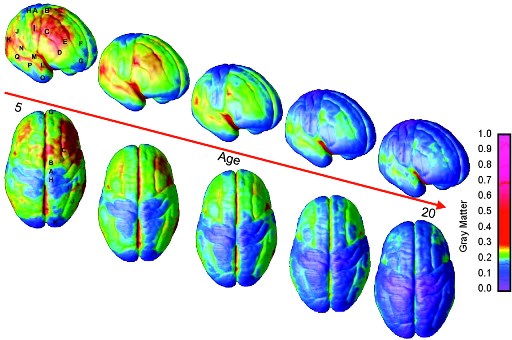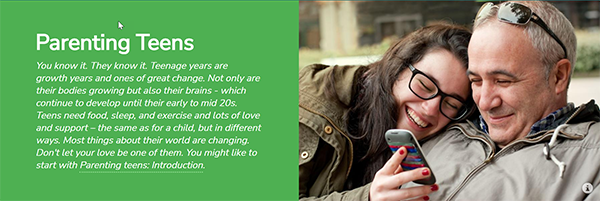Adolescent Brain Development
Adolescent Brain Development
The brain develops very rapidly in the first 3 to 5 years of life, and all the structures and building blocks are present by the age of 9. Find out when the different centres of the brain develop.
Key points about adolescent brain development
- a safe environment where rangatahi (young people) have consistent, loving support is vital for the brain to develop well
- when you are talking to rangatahi, be careful to check what emotion they are seeing in you
- always acknowledge your child's emotions first and then help them to think about what they are feeling
- rangatahi need adults to believe in them and encourage them
- rangatahi respond better to rewards than to punishment
- rangatahi need clear, consistent boundaries
- very importantly, you need to respect their growing capacity and ability to do things independently
When does brain development happen?
The brain develops very rapidly in the first 3 to 5 years of life, and all the structures and building blocks are present by the age of 9. The different centres of the brain develop and become functionally connected over time. The last part to mature is the prefrontal lobe. This happens during adolescence.
Many things affect brain development including genes, individual and environmental factors.
See an illustration of some of the important structures in the brain.
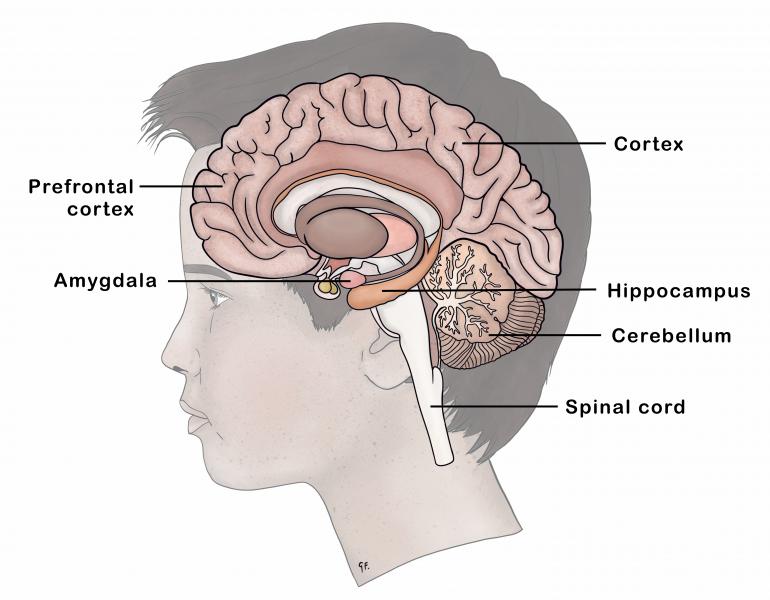
Why does the brain take so long to develop?
Human beings are the only animals that are born completely helpless, and we have the biggest size of adult brain. It is believed that if we were born with an adult-sized brain, our heads would not fit through our mothers' hips. Brain development that continues after birth also helps us better adapt to our living environment (whether it be a city or rainforest) and thereby increases our chances of survival.
We used to think that once children had gone through puberty and growth had finished, development was complete. Then, MRI scanners were invented, and they showed that the brain continues to change for a long time after puberty has finished. In fact, brain development may not be complete until nearly 30 years of age.
The following image shows that the brain doesn't change much in size between 5 and 20 years of age. What changes is the colour. The blue colour shows all the connections happening between all the parts of the brain that are already formed.
How does the brain develop?
Some people like to think of the brain in 4 parts.
1. The spinal cord and the base of the brain
Delivers messages to and from all parts of the body.
Controls what happens in the parts you don't have to consciously think about like the heart, lungs and stomach.

2. The cerebellum
Controls and coordinates movement and other brain processes.
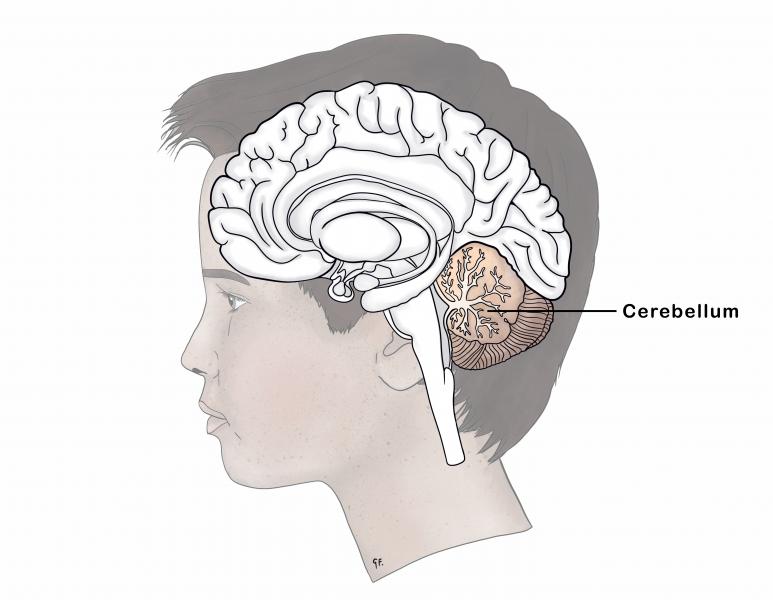
3. The amygdala and hippocampus
Controls emotion and memory.
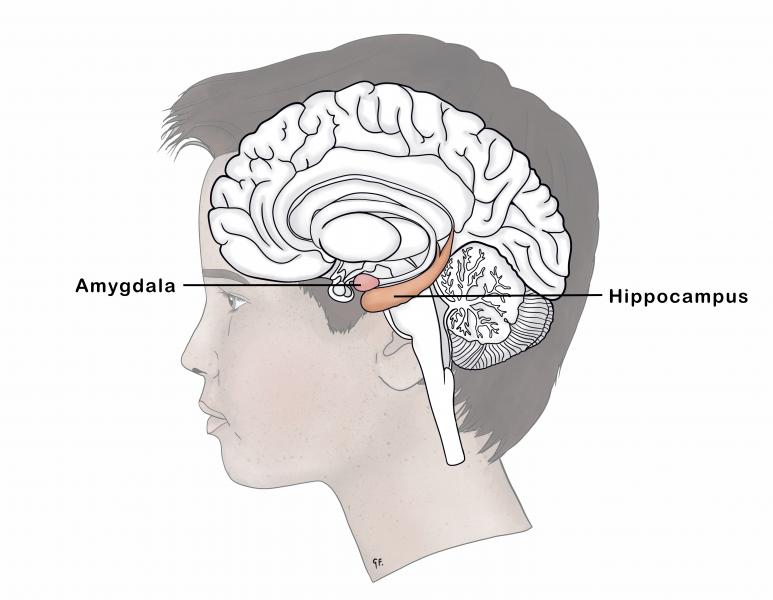
4. The cortex
Connects up all the senses and thinking parts, including the prefrontal cortex which is involved in fine judgement and control.
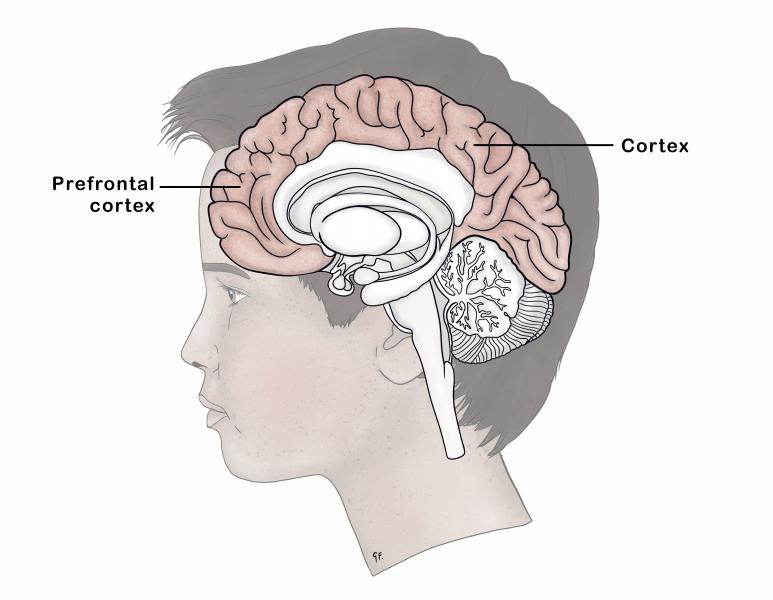
Brain development
The brain is thought to develop and connect functionally in stages. The emotional areas of the brain (the limbic system) are present at birth. Regulation of emotions moves from being more of a shared responsibility (with parents) in childhood, to an individual responsibility in adolescence. This process requires new connections to be formed between the cortical (or higher-level thinking) and emotional areas of the brain. It also leads to adult-level decision making, planning and thinking.
Which part of their brain do teenagers use most of the time?
Rangatahi often 'think with their feelings'
Experiments have been done that show rangatahi often 'think with their feelings'. Scans of the brain can be done to show different parts light up when they are being used.
When adults and rangatahi look at faces showing different emotions, the part of their brain that lights up is different.
Adult brain
Adults use their prefrontal cortex to look at faces and try to decide what emotion is happening.
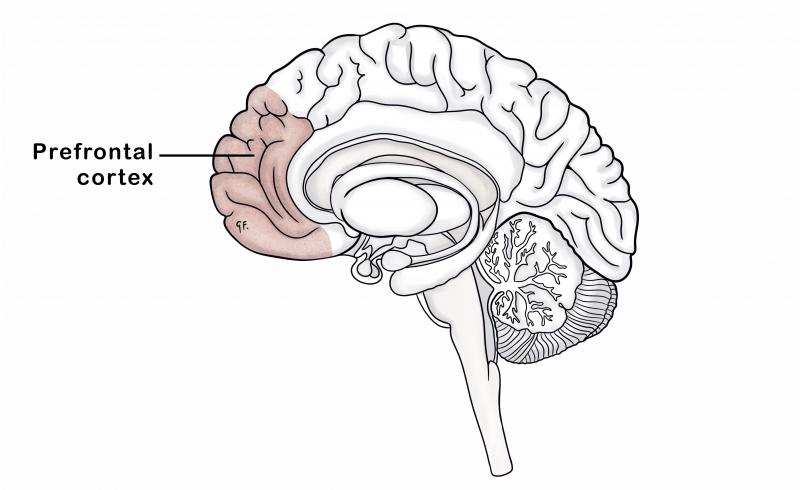
Teenage brain
Rangatahi use their amygdala rather than their prefrontal cortex most of the time. In other words, they are using their emotions to try and understand emotion.
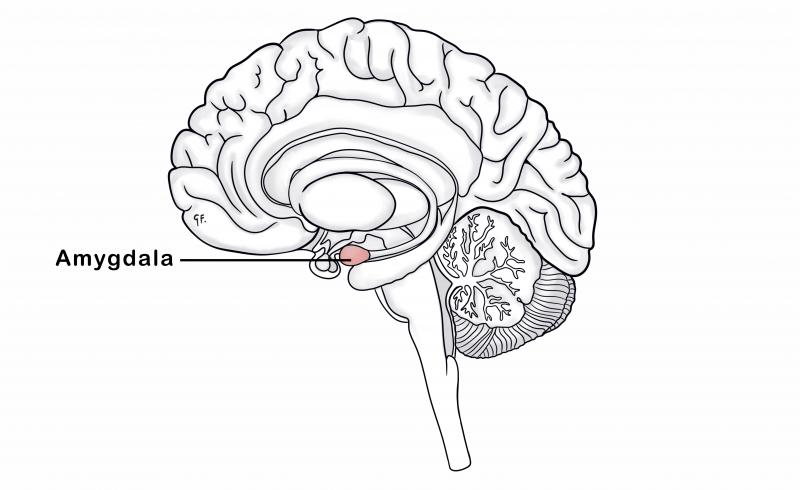
It helps if adults can understand how this feels for rangatahi
To understand how this feels, imagine you have lost your keys and you are already late for work. Think about how many times you look for the keys in the same place - maybe 5, 10, or even 20 times. You panic – you no longer think with your cortex, you are thinking with your emotions.
Remember how it feels if someone tells you to calm down and think sensibly about when you last had them. That is how your teenager feels when they are running on their emotions because their brain often hasn't developed that linkage.
When talking to rangatahi, be careful to check what emotion they are seeing in you
Often, rangatahi can misinterpret emotions, and they see anger when, in reality, you are feeling anxious. This can often lead to many moments of miscommunication. So, when you are talking to rangatahi, be careful to check what emotion they are seeing in you. Make sure you always acknowledge their emotions first and then help them to be able to think about what they are feeling.
What can help brain development?
Talking to your child really helps
Adults who talk to tamariki as they're growing up really help. A safe environment where they have consistent, loving support is vital for the brain to develop well. Rangatahi need adults to believe in them and encourage them.
Rangatahi respond better to rewards than to punishment. They need clear, consistent boundaries, and very importantly, their growing capacity and ability to do things independently needs to be respected.
Rangatahi need opportunities to grow many different skills
As their brains grow and get more functionally connected, and as they mature in other ways, rangatahi need to learn that they don't have to be dependent on their parents but can become healthily dependent on other adults. They need opportunities to grow many different skills and to contribute those skills in a way that is valued. The brain develops in a way that produces lots of connections that are then removed if they are not used. So, take care to encourage lots of useful connections.
Develop good habits during the teen years
Another principle is that when connections 'fire together, they wire together'. The teen years are a vital time to develop good habits around activities like thinking positively, eating and exercising as that wires together for adulthood.
We know that the brain can change throughout life but it is much easier to get the 'wiring right during early life and adolescence than during adulthood.
What harms brain development?
Abuse of any sort
It is now well established that if tamariki experience any sort of abuse, especially in the early years of life, it can affect how the brain is wired and functions. Types of abuse include:
- verbal
- emotional
- physical
- sexual
- neglect
Sometimes, this is hard to change, so it is very important to protect tamariki throughout their development. This is especially important during times of peak brain development. Peak brain development occurs during pregnancy, the first five years of life, and the second phase of brain development around puberty.
Alcohol and drugs
Read and watch videos about adolescent brain development and the effect of alcohol and drugs on the developing teenage brain.
Find out about teens, drugs and the developing brain
Read about alcohol and young people
See more KidsHealth content on parenting teens
This page last reviewed 29 July 2024.
Do you have any feedback for KidsHealth?
If you have any feedback about the KidsHealth website, or have a suggestion for new content, please get in touch with us.
Email us now